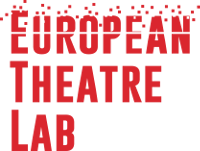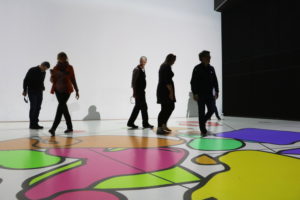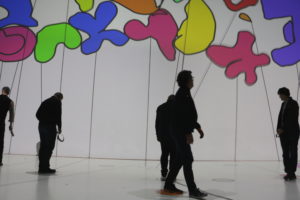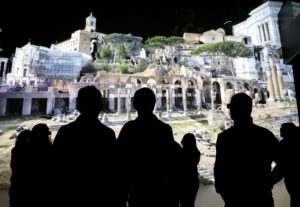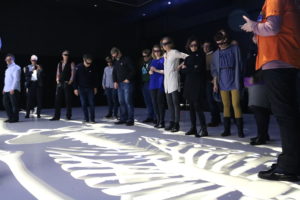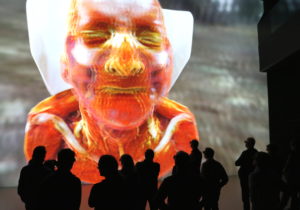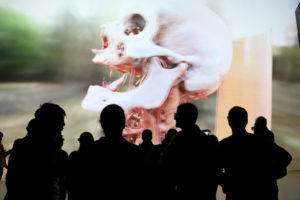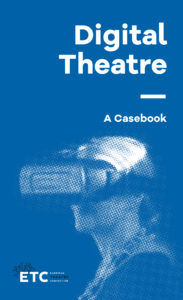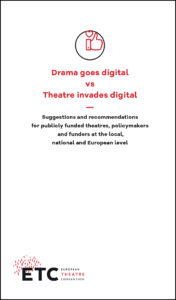Stepping into worlds of imagery
The second presentation was given by Christopher Lindinger from the Ars Electronica Future Lab, the research- and development-motor of Ars Electronica. The projects developed here are prototypical future sketches, an innovation to discuss and reflect on future concepts.
Christopher stated that digital innovation on stage is a huge topic now: 132 (!) stage projects were submitted to the Prix Ars Electronica only in 2016. Recent trends are dynamic VR projections, projection mapping, flying drones, real time capturing of actors and – quite common meanwhile – robots on stage. However, themes and research questions are changing. Right now, the (st)age of participation, interaction and participation technology are being discussed (SMS on screen/ offer leave, shift, meaning), laser spots and limelight, augmented reality (Pokémon GO is influencing the stage artists as well) and co-located games. This gives us a first idea of how the digital future of theatre might look like.
Christophers most important works at the Future Lab include Apparition (2004) by Klaus Obermaier (with interactive parts, real-time computer graphics to make artifacts), Sparked by Cirque du Soleil, ETH Zürich, Verity Studio (Prix Ars Electronica 2016), Cold Stares by Daito Manabe et al., with real time 3D capturings on stage (Prix Ars Electronica 2016) and Sayonara by Oriza Hirate & Hioshi Ishiguro which used an android on stage for the first time. Find out more about the AE Future Lab’s projects on the AE website.
At Deep Space 8K, Ars Electronica’s special projection blackbox, the participants had a sensational, internationally unique experience. Laser tracking and 3D-Animations at 8K resolution took us into a world of imagery: we walked inside the catacombs of the Old Rome, slipped inside the human body and used our bodies and movements in colourful grafic games to change and create new forms in space. Highly recommended!
